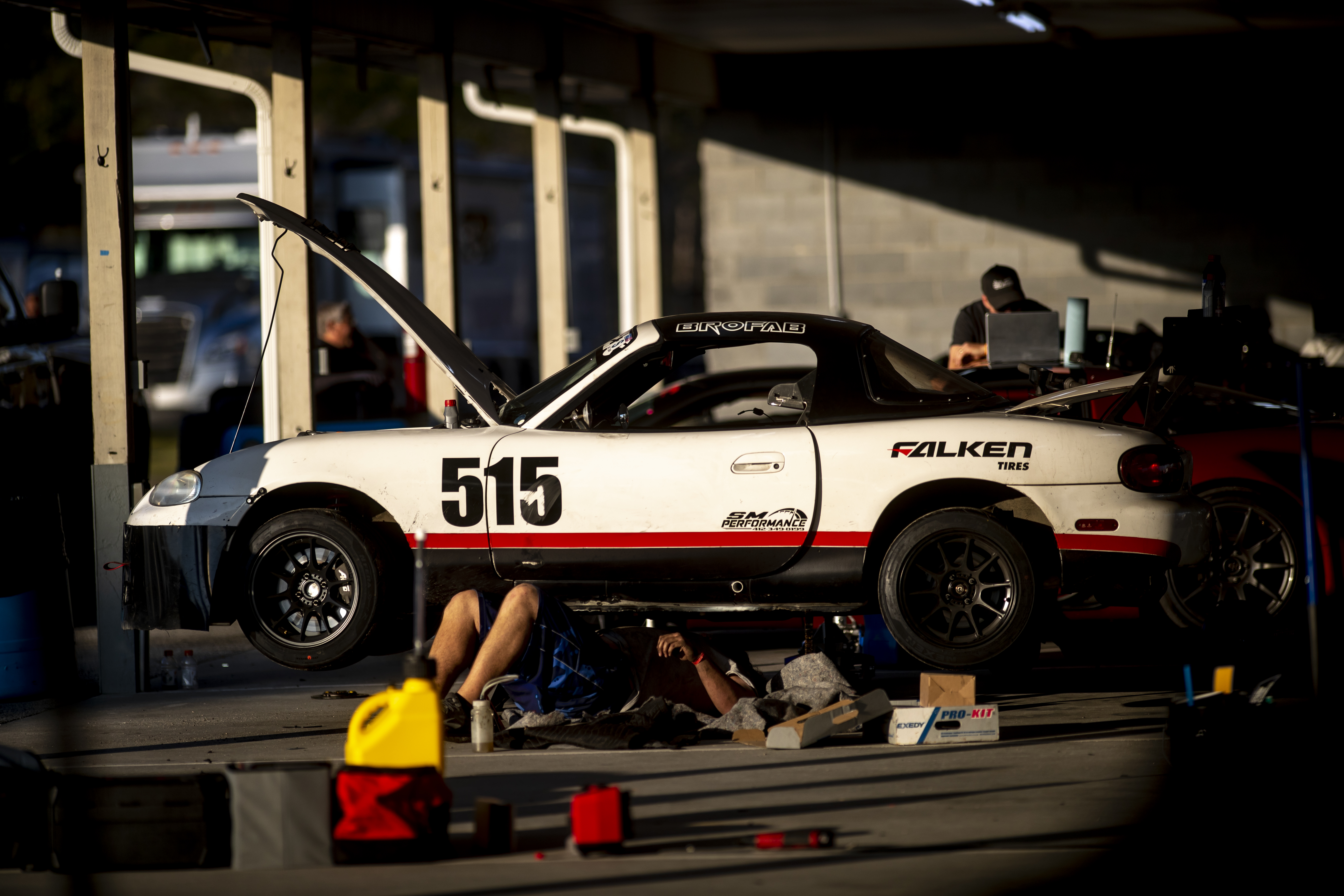Does your car tend to follow the grooves or crown of the road as you drive? Are you seeing uneven wear on your tires? Does the steering feel "heavy" and clumsy, like you're driving a loaded dump truck? Does the steering wheel not center itself readily after rounding a corner?
If so, you might have a problem with your suspension. Maybe you're getting your car ready for that planned summer road trip. Finding and fixing these often minor problems with tie rods, the idler arm, Pitman arm and/or the rack and pinion will save significant time and money over waiting for a more serious problem to occur.
Worn Tie Rod Ends Allow Wheels to Drift
 Drivers notice worn tie ends as the need to move your steering wheel left and right and constantly correct to keep it going straight down the road. The easiest way to verify that a particular end is worn is by raising and supporting the front end and squeezing the rod end with your hand. Some people will use Channellock-type pliers, but these will allow for excessive force to be applied. If you can squeeze the tie rod end more than one-eighth of an inch, it should be replaced.
Drivers notice worn tie ends as the need to move your steering wheel left and right and constantly correct to keep it going straight down the road. The easiest way to verify that a particular end is worn is by raising and supporting the front end and squeezing the rod end with your hand. Some people will use Channellock-type pliers, but these will allow for excessive force to be applied. If you can squeeze the tie rod end more than one-eighth of an inch, it should be replaced.
 It's easiest to check tie rod ends if you can get under the car to get a more comfortable grip on the rod end. Perform an external inspection. If the grease (Zerk) fitting is missing or the boot is torn or missing, replace it. Wrapping it with a rag will help keep your hands clean—for a little while, at least. Grip the tire front and rear and move it in and out while observing for motion in the assembly that is not reflected in the steering knuckle.
It's easiest to check tie rod ends if you can get under the car to get a more comfortable grip on the rod end. Perform an external inspection. If the grease (Zerk) fitting is missing or the boot is torn or missing, replace it. Wrapping it with a rag will help keep your hands clean—for a little while, at least. Grip the tire front and rear and move it in and out while observing for motion in the assembly that is not reflected in the steering knuckle.
Tools You'll Need:
- Hammer
- Jack and stands or ramps
- Wrench set
- Wire cutters or pliers
- Adjustable wrench
- Pickle fork or front-end service set
- Small punch
- Blue Threadlocker
- Grease gun and grease
Replacing a Worn Tie Rod End

The part on the left is a typical tie rod end on a rack and pinion car, while the one on the right is a typical tie rod end in a parallelogram steering system.
How a tie rod end is replaced will depend on whether your car has rack and pinion or a steering gearbox. In a rack and pinion system, there are two outer tie rod ends and two inner tie sockets (more on them later), whereas in a steering gearbox system, also known as parallelogram steering, there are two outer and two inner tie rod ends (See images in section above). First off, make sure the steering wheel is centered, and measure and make note of the distance between the inner sidewalls of both tires.
1. Block a rear wheel and raise and support the front end.
2. If applicable, remove the cotter pin locking the nut to the stud and remove the nut.
3. Separating the stud from the knuckle (or drag link) can often only require a few hard smacks with a hammer—it is usually easier to hit the side of the knuckle instead of the stud in order to separate. Otherwise you can use a specialty tool like a pickle fork or front-end service set to separate. Pickle forks will typically damage the boots of what you are trying to separate, so use the pullers in the front-end service set if you are planning to reuse any parts. Advance Auto Parts has these and other tools available in its loaner tool program.
4. Remove the old tie rod end one of two ways:
- With rack and pinion steering, the tie rod end is secured to the rack shaft with a locknut that must be loosened before the end can be spun off the shaft.
- With parallelogram steering, the nuts and bolts on the adjuster sleeve need to be loosened before the rod end can be spun out of the sleeve.
Note: Be sure to count the number of turns required to remove the rod end.
5. Spin the replacement rod end into the adjusting sleeve or onto the shaft. Be sure to use the same number of revolutions that were required to remove it.
6. Slide the stud into the knuckle or link and tighten the nut down.
7. Measure the distance between the tires.
8. If the before-and-after measurements are the same, you can tighten the lock nut or adjuster sleeve nuts and insert the cotter pin. Otherwise you'll need to adjust the shaft or sleeve a little. With parallelogram steering, you'll need to pop the stud loose again and turn only the tie rod end you replaced.
9. Grease any steering or suspension parts that have been replaced.
10. Lower the car and take it to a repair shop to have the alignment checked, because it's most assuredly going to be off.
Checking a Rack and Pinion Inner Tie Socket
An inner tie socket replaces the inner tie rod ends in rack and pinion steering, and they can wear out as well. To check them, raise and support the front end and block a rear wheel. Turn the steering wheel all the way to the right. Reach in behind the left front wheel and squeeze the boot on the end of the steering rack and have someone rock the steering wheel back and forth. If you feel movement in the rack before the rod shaft moves, the inner socket needs to be replaced.
Replacing an Inner Tie Socket

A typical inner tie socket on a rack and pinion.
The rack boot must come out first to replace the inner socket. Squeeze the ears on the clamps and slide them off the boot and push the boot to the end of the shaft, exposing the socket. From there it's straightforward:
1. The socket is secured to the rack with a pin that must be knocked out carefully. (See image above)
2. Use an adjustable wrench to clamp the rack shaft as you loosen and remove the socket assembly.
3. Following the instructions above, remove the outer tie rod end.
4. Remove the inner socket assembly.
5. Thread and lock down the new inner socket assembly.
6. Reattach the outer tie rod end, making sure to keep the same number of turns.
7. Slide the boot back in place and put the clamps back.
8. Check the measurement between the tires and adjust as needed.
9. Grease any steering or suspension parts that have been replaced.
Note: Use 2 to 3 drops of Blue Threadlocker
Safety Notes:
- Whenever you raise your car with a jack, always do so on a flat and level surface, such as in a garage or carport or at the curb, and never an inclined surface such as a driveway.
- Whenever working under your car or using impact tools such as a hammer, be sure to wear approved safety glasses.







